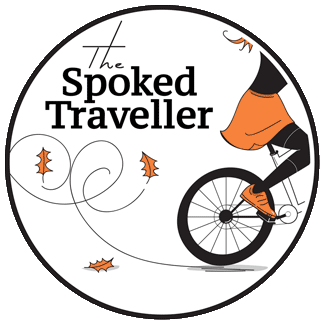29 Aug Battle with the heart rate monitor: Art verses Science
My sweet man (the engineer who needs numbers) has asked, even begged, for me to wear a heart rate monitor while I cycle. “Mmmfff. I go by feel (me the artist and free-spirit). I don’t want numbers to dictate my ride,” is my go-to retort. And, while I still agree that you need to listen to your body, it’s undeniable that if you’re training, you need to listen to the numbers.
So, while I rode hill intervals in High Park in Toronto–see route below– I wore the heart rate strap for the first time and the numbers told me a few things.
(Great route alert: start at Ellis and Queensway. Climb Ellis, then turn right onto Ellis Park Road swooping downhill on a fun curve, continue straight onto the second climb up Olympus into Harcroft Road leading to Bloor St. which will take you up a power climb into the park). Killer. I did seven loops in an hour and a half. Ellis High Park Loop
First, how fast I recover from a hard climb, or peak, is an indicator of my fitness level. During this ride, I was able to get my peak heart rate up to 174 beats per minute. My love says I still have no idea how high I can get it. A lifetime of lollygagging, he might say? This peak happened on the third loop (out of seven), and within a minute it dropped back down to about 140 and steadily to 130. It’s not stellar according to the experts, but I’m on my way. If I was unfit it might take much longer to recover.
According to my Epic Israel race partner, Karen Duff of www.Fit4Adventure.com, the faster recovery also means your blood is carrying more oxygen. More red blood cells are being produced when you’re in peak form. Faster recovery means you can recover and take off again while your competition is still gasping for air!
And, you don’t want to hit the same numbers all the time; depending on your fitness goal, say for that day (endurance, power, etc) your goal heart rate will vary. So, I do the killer hill repeats (in general, as it will also improve endurance) to improve my anaerobic capacity, as well as my strength and power.
*If I want to improve my endurance, as my Israel race will cover about eight hours of riding a day, then I would try to keep my heart rate somewhere between 65 and 75% of my maximum (which I still have to determine: am I capable of going higher than 174 beats per minute?) during long multi-hour rides.
*For a recovery ride, which is meant to refresh your legs after a hard day, your heart rate should be low, about 50 to 60% of your maximum.
There. Understand? Got it? If not entirely, then also be the artist and listen to your body and mind. Meaning, you know if you’ve worked hard; you know if you’ve pushed as hard as you can. But, don’t be so dismissive of Mr. Smarty-Pants-Engineer whose heart rate can also help you fine tune your performance! It’s a combination of both art and science. The science helps you train more efficiently.

No Comments